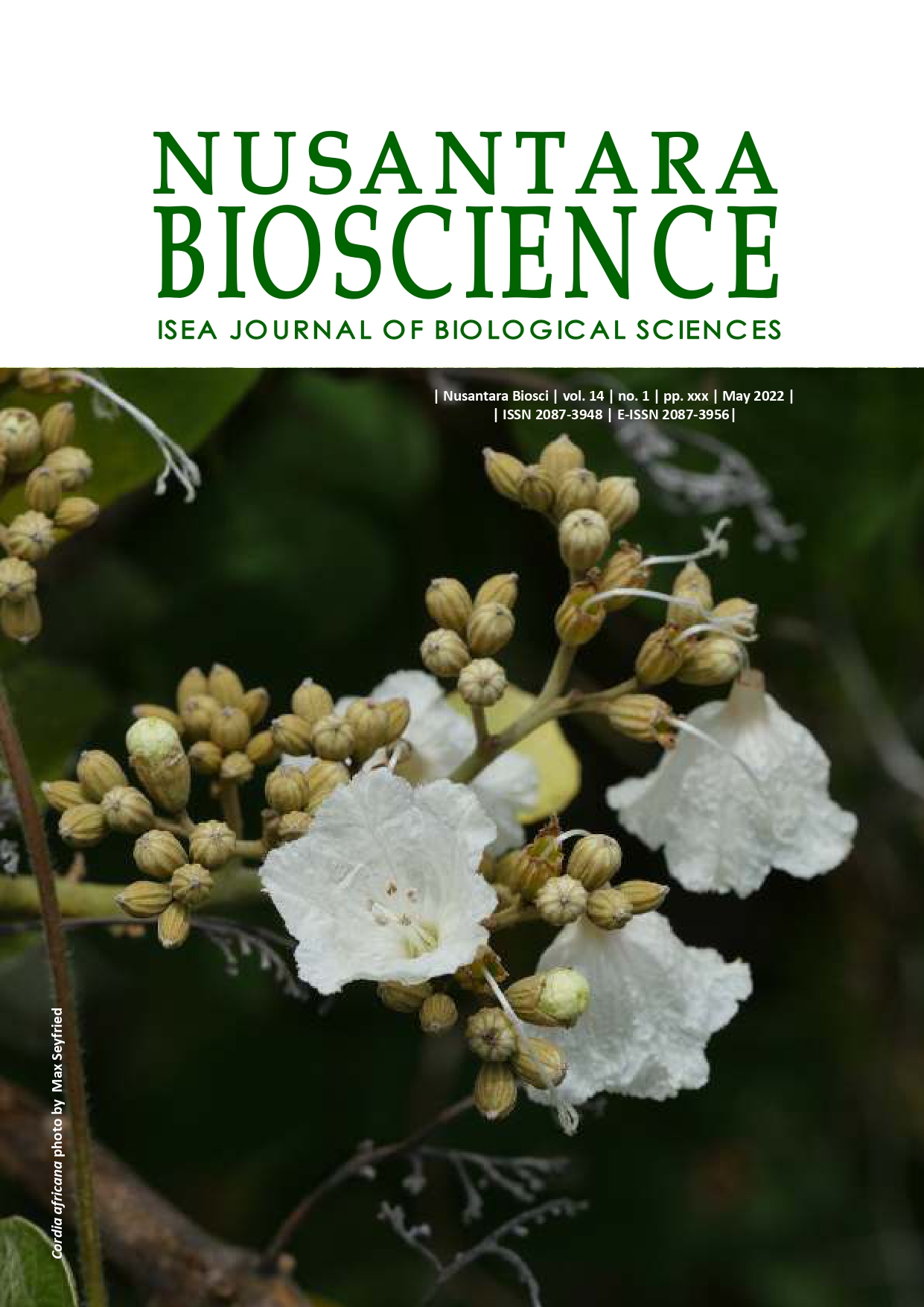Short Communication: Thromboplerous hyphae of the ectomycorrhizal mushroom Rhizopogon roseolus with and without a host tree
##plugins.themes.bootstrap3.article.main##
Abstract
Abstract. Putra IP, Aimi, T, Shimomura N. 2022. Short Communication: Thromboplerous hyphae of the ectomycorrhizal mushroom Rhizopogon roseolus with and without a host tree. Nusantara Bioscience 14: 47-52. Thromboplerous hyphae are modified hyphae found in the basidiocarp of many agarics. However, data on their development and function, as well as on their formation in pure cultures of ectomycorrhizal mushrooms, are scarce. The aim of the present study was to characterize the cytological descriptions of thromboplerous hyphae from pure cultures of Rhizopogon roseolus (Corda) Th.M. Fr. with or without the host pine tree Pinus thunbergii Parl. Thromboplerous hyphae formed on the mycelium and mycelial cords in all experimental settings. Results revealed thromboplerous hyphae were extremely melanized, smooth, cracked on the surface, and swollen at both hyphal termini. Thromboplerous hyphae produced with a host were mainly unbranched in shape in contrast to those formed without a host that possessed additional twisted, semi-twisted, and branched forms. Some thromboplerous hyphae that grew without a host had large diameters, and few showed notable septa and clamp connections. The present study also provides evidence of the initial development of thromboplerous hyphae via vegetative and tubular hyphae. This study contributes to understanding the cytology of thromboplerous hyphae grown with and without a host tree. Further investigations on the specific functions of thromboplerous hyphae are needed to deepen the current knowledge of fungal cytology.
2019-01-01

